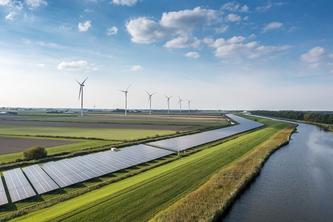
The effect of colder winters spills over into spring when the ground is still frozen during snowmelt and early rainstorms. University of Minnesota experts Diana Karwan and Jacques Finlay address how the melting of large quantities of snow impact local waterways, such as lakes and rivers, by bringing along more than just water.
Jacques Finlay, Ph.D.
“The amount and timing of snowmelt, and the substances that move with it, vary widely each year. Large amounts of water moving across frozen soils can transport large amounts of nitrogen and phosphorus, particularly from the surface soils of urban and agricultural landscapes. Many management structures and practices intended to reduce nutrient losses to water — thus improving water quality — do not work well under cold conditions, making snowmelt a unique problem to solve.
“With the extensive snowpack we had this spring, I expect that snowmelt will play a large role in hydrology, nutrient transport and water quality of lakes and rivers throughout the upper Midwest this coming year. Some impacts Minnesotans will see from more nitrogen and phosphorus in the water include large algal blooms, and more harmful algae in those blooms, both which lead to degraded water quality conditions in lakes.”
Contact information
Jacques Finlay
[email protected]
612-624-4672 (o)
Jacques Finlay is a professor in the College of Biological Sciences and a fellow at the Institute on the Environment. He specializes in ecology of aquatic ecosystems and the interaction with natural and human-altered landscapes. His current research investigates how food webs and ecosystems interact, including the energy flow regulation in river food webs; impacts of introduced species on aquatic ecosystems; surface and groundwater interactions in stream carbon and nutrient cycles; and carbon and nitrogen biogeochemistry of boreal and arctic watersheds.
Diana Karwan, Ph. D.
“High stream water flows in spring often come with high levels of suspended sediments and turbidity in rural areas. These water quality metrics describe the cloudiness, or lack of clarity, in water, and come from many different sources across the landscape, as well as in stream and river channels.
“In many rural areas, such as forested northern Minnesota, suspended sediment and water cloudiness are often the primary water quality concerns in streams and rivers. Research in this region shows higher levels of sediment and less transparent water during times of high stream and river flow, such as during spring snowmelt and rainstorms. Spring floods also send the largest amounts of sediments further downstream to receiving rivers and lakes. Observations in agricultural areas in the Great Lakes region show similar patterns — high levels of sediment suspended in the streams and rivers during spring floods.”
Contact information
Diana Karwan
[email protected]
612 624 2774 (o)
Diana Karwan is an assistant professor in the College of Food, Agricultural and Natural Resource Sciences and an associate in the Institute on the Environment. She specializes in watershed hydrology and critical zone processes, including how variations in climate and land use drive physical, chemical and ecological transport processes in watersheds. Particularly, how sediment and organic material affect local watersheds.
###
Media note:
The University of Minnesota Twin Cities is equipped with a VideoLink ReadyCam® studio for live or taped HD television interviews with our experts. To arrange an interview, contact University Public Relations at (612) 624-5551 or [email protected].
- Categories:
- Agriculture and Environment





